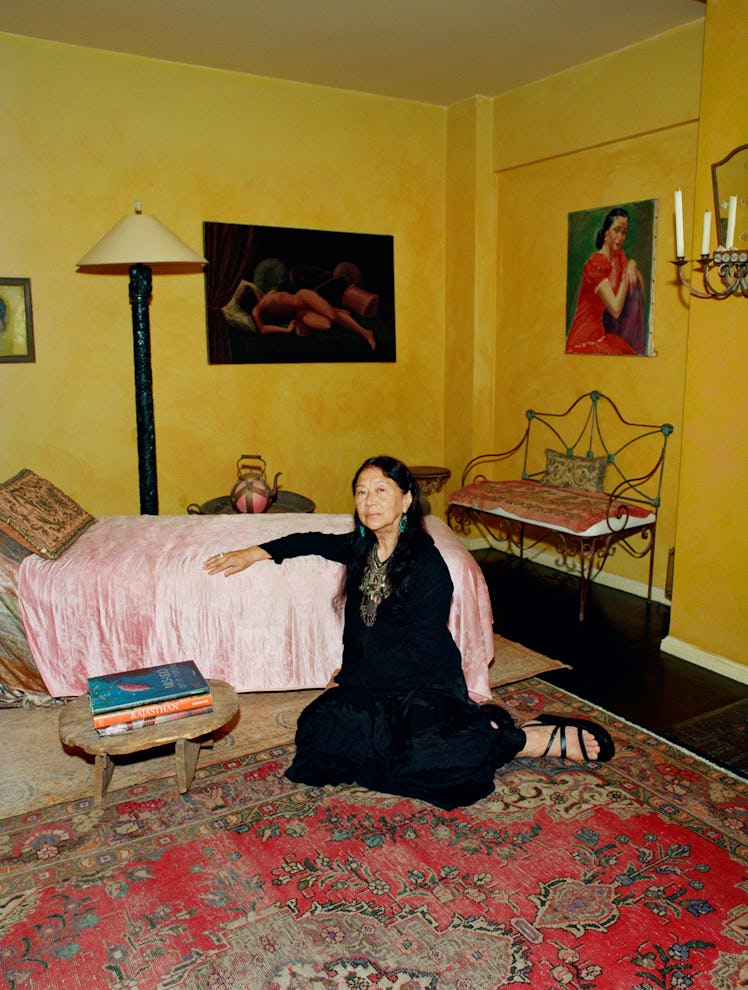Creative Director Nian Fish on True Originality in Fashion
Fish has spent decades helping fashion visionaries bring their collections to life on the runway. Here, she shares the story of how she went from selling jewelry at Tupperware parties to watching Calvin Klein invent “the New Length.”

For our annual “The Originals” issue, we asked creatives—pioneers in the fields of art, design, fashion, comedy, activism, and more—to share their insights on staying true to themselves. Read all of this year’s interviews here.
You’ve worked behind the scenes in the fashion industry for decades, helping the likes of Calvin Klein, Ralph Lauren, Tom Ford, Jil Sander, Helmut Lang, and Phoebe Philo bring their visions to life on the runway, first at the PR and production firm KCD, and now with your own eponymous business. How would you describe what you do?
I work to keep a brand’s name alive and pushing forward, and I do that through the medium of a fashion show. I’ve been there, seen it, done it all, and because of that, when designers are regurgitating a certain era, I even try to help push that forward, to make it relevant to today. Because in fashion, there’s always some hint of the past.
Do you think there is ever any true originality in fashion, if we’re always going back to previous eras and reimagining them? Where does real creativity come from?
I know this may sound corny, but I really think creativity comes from the universe. I don’t like to use the word “god,” because I’m not religious, but creativity comes from a connection to your true self. I have had the privilege of working with designers who really are legends, and all of them definitely had references. Calvin, for example, would have a minimalist architectural reference, like a particular color of a white wall, but then he would translate that into a slip dress. So he’s referencing a whole other medium, but it speaks to his own sense of ease and luxury.
What does it feel like to watch a designer create something that feels truly new and innovative?
I remember watching Francisco Costa—he actually drapes, you know? He had a soft fold that he was putting over a model’s chest, and then he somehow minimized it and sharpened it, and it turned into a sculpture. Once, when I was working with Calvin in the ’90s, the entire collection was at the ankle, and the night before the show, he said, “There’s something about this that’s just not right.” So we called every model back, and hemmed every skirt and dress to just below the knee. I saw that this was going to be a whole new look—and as a matter of fact, WWD branded it “the New Length.”
Tell me about how you got your start in fashion. You mention on your website that as a kid, you used to put on talent shows in your lobby.
I was supposed to be a writer. That’s what my teachers told me since I was 10 years old. I was going to go to Columbia Journalism School, and I didn’t have the money, so I started doing these odd jobs, like sewing dresses for women on Park Avenue, and making jewelry that I would sell at Tupperware parties. I was making a living, raising my daughter, being married. Then Kezia Keeble and Paul Cavaco, who were the No. 1 styling team of the ’70s and ’80s—they were my best friends, because we were all Buddhists—invited me to be their assistant. One day, they had three jobs to do, and there were only two of them, so they sent me off alone on a weeklong Dior campaign shoot with Richard Avedon.
You’re known for having an all-black uniform. Is it more about convenience, or is there a philosophy behind that choice?
It started in 1981, when I shopped at Charivari. They had all the Japanese designers: Comme des Garçons, Yohji Yamamoto, Issey Miyake, Kenzo. Everything was black, and people were not wearing black back then; they were wearing purple, magenta, orange—really, really bright colors. I just felt, Wow, this really suits me. I stood out and started getting a lot of, like, “Oh, you look cool. You look like an artist.” Now I mostly wear Comme des Garçons, and I’ll add a colorful scarf or some Oaxacan earrings. I do have a little bit of slight worship of the Georgia O’Keeffe desert look. I like that image.
This article was originally published on